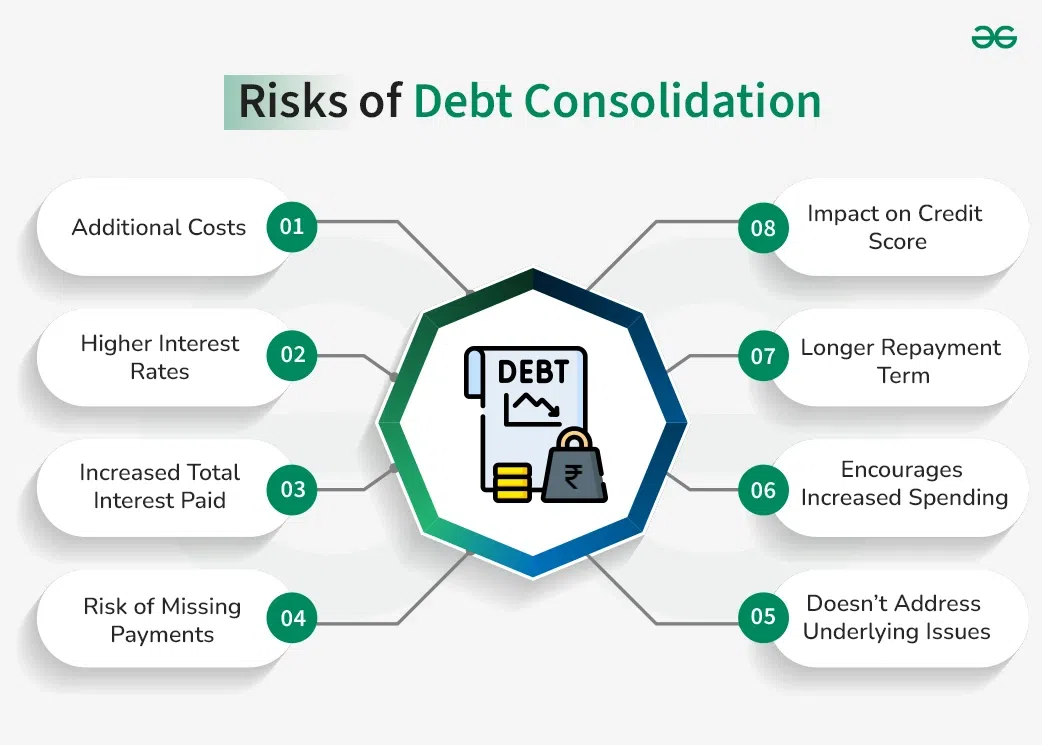Debt Consolidation Path To Victory
Debt consolidation is a strategic approach that allows individuals to combine multiple debts into a single, manageable payment. This method is often employed to reduce the stress of juggling various bills and due dates while potentially lowering the overall interest rate. By consolidating debts, borrowers can focus on a single monthly payment, simplifying their financial obligations.
One of the most significant benefits of debt consolidation is the potential to secure a lower interest rate compared to what is charged on individual debts. High-interest credit card debts, for example, can be merged into a loan with a more favorable rate, saving the borrower money over time. However, the effectiveness of debt consolidation depends on proper execution and financial discipline.
Types of Debt Consolidation Methods
There are several methods to achieve debt consolidation. Each has its advantages and is suited for different financial situations. Below are the most common approaches:
1. Personal Loans
Personal loans are among the most accessible debt consolidation tools. These loans allow borrowers to repay their existing debts and replace them with a single loan. Personal loans often offer fixed interest rates and predictable monthly payments, making budgeting easier.
2. Balance Transfer Credit Cards
A balance transfer involves moving high-interest credit card debt to a card with a lower or zero introductory interest rate. While this method can lead to significant savings, borrowers must be cautious. After the introductory period, the interest rate may increase substantially, so paying off the balance within the promotional timeframe is essential.
3. Home Equity Loans or Lines of Credit (HELOCs)
Homeowners may opt to use the equity in their property to consolidate debts. A home equity loan provides a lump sum, while a HELOC acts as a revolving credit line. These options often come with lower interest rates compared to unsecured loans. However, since the debt is secured by the home, failure to repay could lead to foreclosure.
4. Debt Management Plans (DMPs)
Through nonprofit credit counseling agencies, borrowers can enroll in a DMP, where a counselor negotiates with creditors for lower interest rates and fees. Borrowers then make a single monthly payment to the agency, which distributes the funds to creditors.
Steps to Achieve Debt Consolidation Success
Following a structured plan is essential to make debt consolidation work effectively. Here’s a step-by-step guide:
1. Assess Your Financial Situation
Start by evaluating your debts, including the total amount owed, interest rates, and minimum payments. This step provides a clear picture of your financial obligations and helps determine if debt consolidation is the right choice.
2. Research and Compare Options
Not all debt consolidation solutions are equal. Research different methods and compare interest rates, fees, repayment terms, and overall costs. Selecting the option that aligns with your financial goals is crucial.
3. Create a Budget
Developing a realistic budget ensures you can meet your consolidated payment without falling behind on other financial commitments. A well-structured budget helps you stay on track and avoid accumulating new debt.
4. Stick to the Plan
Commitment is critical when following a debt consolidation plan. Avoid the temptation to take on new debt and focus on paying off your consolidated loan. Consistency will lead to long-term financial freedom.
Benefits and Potential Pitfalls
Benefits of Debt Consolidation:
- Simplified Finances: Combining multiple debts into one payment makes it easier to manage your obligations.
- Lower Interest Rates: A lower rate can reduce the total cost of your debt.
- Improved Credit Score: Successfully managing consolidated debt can positively impact your credit score over time.
- Stress Reduction: Simplifying your debt repayments alleviates financial stress.
Potential Challenges:
- Risk of New Debt: Without discipline, borrowers may accrue additional debt, negating the benefits of consolidation.
- Fees and Costs: Some debt consolidation options involve fees, such as balance transfer fees or closing costs for loans.
- Longer Repayment Periods: While monthly payments may decrease, extending the repayment period can increase the overall interest paid.
- Secured vs. Unsecured Risks: Using assets like a home as collateral introduces the risk of losing those assets if repayments are missed.
Monitoring Progress and Adjusting as Needed
Regularly reviewing your financial progress is essential during the debt consolidation journey. Track your payments and adjust your budget as needed to stay on course. Celebrate milestones, such as paying off significant portions of your debt, to maintain motivation.
Additionally, consider seeking professional advice if you encounter difficulties. Credit counseling services and financial advisors can offer tailored guidance to ensure you remain on the path to victory.
Building Better Financial Habits
Debt consolidation is not just about simplifying payments; it’s an opportunity to reset your financial habits. Commit to:
- Living Within Your Means: Avoid unnecessary expenses and prioritize saving.
- Establishing an Emergency Fund: Build a safety net to prevent future debt accumulation.
- Regularly Reviewing Financial Goals: Set short-term and long-term objectives to maintain focus and motivation.
By combining these strategies with a successful debt consolidation plan, individuals can achieve financial stability and set themselves up for future success.
